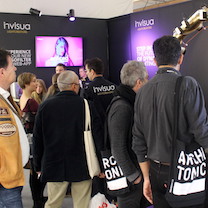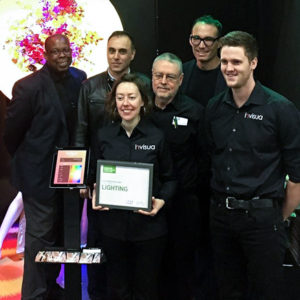
Color as an effective visual merchandise tool
5 golden tips for the use of dynamic lighting in relation to color
The power of color can be used effectively in visual merchandising. With the choice of colors, you make a clear statement and you aim for unconscious associations. When it comes to color, the connection with the choices for materials and products is already very well made in visual merchandising. But the effect of lighting on the applied colors is often forgotten. That while the brightness of the light, the light distribution and the chosen light colors strongly affect the buying behavior of customers in a store. Light is an important design tool that affects customers and passers-by. Because light radiates emotion, lends spaces atmosphere and makes it easier for people to find their way around. In this blog we give 5 golden tips for the use of dynamic accent lighting.

Choose contrast
When designing the lighting plan of shops, attention is often only focused on realizing sufficient clarity in the shop windows and in-store. However, recent studies* into perception of shop lighting show that it is not only the brightest illuminated parts of the shop window capture the attention of passers-by and customers and influences the perception. But that it is primarily the contrasts in shop windows and stores that catch the attention and influence perception. An additional advantage is that in order to realize contrasts, all-over brightness is not required. Which results in lower energy consumption. Which is good for the environment and for energy costs.

Convey emotion with color
Colors are a powerful tool to convey emotions and create a recognizable atmosphere. The use of color influences the way a space is experienced by the customer. Cool color temperatures, such as cool white, make the store look more spacious. While warm color temperatures give the impression of coziness and intimacy. White light around 3000K to 4000K extends the amount of time customers spend in a store. Moreover, these white light colors are perceived as pleasant and they improve the sense of well-being of customers. For shops that want to respond to a sense of intimacy and security, it is wise to opt for warmer white light colors.

Apply various light colors
To stand out, it is important to apply various light colors within a single lighting concept. The use of various lighting colors provides more striking presentations and gains stopping power. For example, different color temperatures can be consciously deployed across general lighting and accent lighting. Powerful images can be created by choosing for white tones and subtle colors in the accent lighting. Moreover, by optimizing accent lighting for the presentation, it is possible to look carefully at the light colors that suit the presentation best. If cool colors are used in the presentation, cooler whites give the presentation an optimal color representation. If the presentation contains a lot of materials with warm tones, it is better to opt for warmer whites. If the intention is to capture the attention by means of a real color statement, it is better to opt for dynamic light shows that subtly play with the perception of the colors.

Consider the differences in perception depending on gender and age
The customers perception of a store depends on gender, age and personal preferences. Men and women experience shops very differently. For example, men keep a broad overview of a retail space upon entry. While women look at details very quickly. Men are more attracted by cooler shades that suit their spatial approach and personal preferences. Whereas women prefer warmer tones that bring details to life and create a pleasant atmosphere. Children are attracted by brighter colors and movement.
With this knowledge in mind, it is important to optimize the lighting for the intended target group. By playing with the direction of the light, the light color and the light intensity. And by adjusting it dynamically during the course of the day. In this way it is possible to respond optimally to the target group of the store at each time of day. This is extremely relevant for stores that target multiple target groups of different ages. Knowledge of when the target group visits the store can be used effectively in the design of the ideal lighting plan for every moment of the day.

Apply accent lighting in shop windows
In shop windows the use of accent lighting aimed at the most important parts of the presentation is preferable. In combination with the available daylight, this forms an attractive whole to look at. Natural contrasts arise that require attention. These contrasts can be emphasized even further by means of accent lighting. In the evenings and at times when there is little daylight, even low illuminance levels are sufficient to awaken the curiosity of passersby with spatial and subtly changing shop window lighting.
* A.o. research by Zumtobel “Attention, attractiveness and perception mediated by lighting in retail spaces”


































